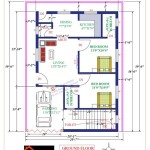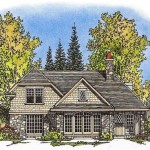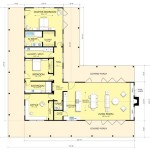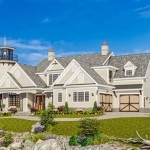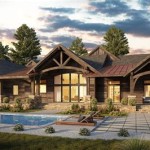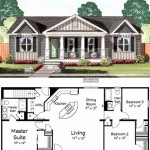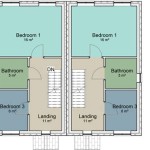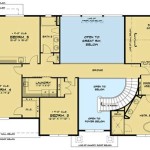Charming European Cottage House Plans For Timeless Appeals 2024
The enduring appeal of European cottage house plans lies in their ability to evoke a sense of warmth, charm, and storybook elegance. In 2024, these designs continue to captivate homeowners seeking a blend of rustic sophistication and modern functionality. These plans are known for their characteristic detailing, which often includes steeply pitched roofs, arched doorways, exposed beams, and use of natural materials. They provide an alternative to contemporary designs by offering a timeless aesthetic that feels both comfortable and inviting.
European cottage house plans are not monolithic; they encompass various regional styles, each with unique features and historical influences. From the quaint, timber-framed cottages of the English countryside to the sun-drenched stone villas of the Mediterranean, these designs borrow from a rich architectural heritage. Understanding these nuances is crucial for homeowners seeking to create an authentic and visually appealing residence.
The appeal of European cottage house plans goes beyond aesthetics. These designs often prioritize efficient use of space, connectivity to the surrounding landscape, and sustainable building practices. Many contemporary adaptations incorporate modern amenities and energy-efficient technologies, adapting the classic cottage to contemporary living standards without sacrificing its inherent charm.
Key Elements of European Cottage House Plans
Several key architectural elements define the character of European cottage house plans. Recognizing these elements is essential for both appreciating the design and implementing them effectively in a new construction or renovation project.
Steeply Pitched Roofs: This is a signature feature of many European cottage styles. Steeply pitched roofs are not just aesthetically pleasing; they also provide practical benefits. The pitch allows for efficient water runoff, which is especially important in regions with heavy rainfall or snowfall. The steep pitch also allows for the creation of usable attic space, often transformed into bedrooms, offices, or storage areas. Furthermore, the visual prominence of the roof contributes significantly to the overall cottage aesthetic, adding to its perceived height and visual interest.
Arched Doorways and Windows: Arches soften the lines of a building and create a welcoming and intimate feel. Arched doorways are frequently used as entryways, providing a sense of grandeur while maintaining the cottage's overall charm. Arched windows, whether used individually or in groupings, allow ample natural light to enter the home while adding visual interest to the exterior facade. The use of arches is a subtle but impactful detail that contributes significantly to the overall feeling of warmth and character associated with European cottages.
Natural Materials: The use of natural materials, such as stone, brick, timber, and stucco, is crucial for achieving an authentic European cottage aesthetic. These materials not only provide durability and longevity but also contribute to the building's overall texture and character. Stone can be used for foundations, exterior walls, or accent features, while brick adds warmth and sophistication. Timber is often used for exposed beams, window frames, and decorative elements, lending a rustic charm to the interior. These materials, often left unfinished or finished with natural stains, contribute to the cottage's connection to its environment.
Multi-Paned Windows: Small, multi-paned windows are a common feature, which enhance the cottage's aesthetic appeal and also serve a practical purpose. The smaller panes often reflect the sunlight in a way that mimics the glow of candlelight, adding to the cozy atmosphere. The use of multiple panes also adds depth and dimension to the windows, making them a focal point of the exterior design.
Exploring Regional Variations in Cottage Design
European cottage house plans are not a single, unified style. Different regions boast unique variations that reflect local building traditions, available materials, and climate conditions. Understanding these regional nuances can assist homeowners in choosing a design that aligns with their personal preferences and the surrounding environment.
English Country Cottages: Characterized by their thatched roofs, half-timbered walls, and rambling layouts, English country cottages exude a sense of timeless charm and rustic elegance. These cottages often feature small, leaded windows, climbing roses, and meticulously landscaped gardens. The interiors are typically cozy and intimate, with exposed beams, fireplaces, and comfortable furnishings. The overall aesthetic is one of understated elegance and rural simplicity.
French Provincial Cottages: These cottages showcase a more refined and symmetrical design, often featuring stucco walls, steeply pitched roofs, and decorative shutters. French provincial cottages typically incorporate elements of classical architecture, such as symmetrical facades, arched windows, and decorative moldings. The interiors are often light and airy, with elegant furnishings, ornate chandeliers, and a focus on natural light. The overall aesthetic is one of sophisticated charm and understated luxury.
Mediterranean Cottages: Inspired by the sun-drenched landscapes of the Mediterranean, these cottages often feature stucco walls, terracotta roofs, and arched doorways. Mediterranean cottages are designed to maximize natural light and ventilation, with large windows, courtyards, and outdoor living spaces. The interiors are typically warm and inviting, with terracotta tile floors, exposed beams, and colorful accents. The overall aesthetic is one of relaxed elegance and outdoor living.
Scandinavian Cottages: Reflecting the minimalist aesthetic of Scandinavia, these cottages typically feature clean lines, simple forms, and natural materials. Scandinavian cottages are designed to maximize natural light, with large windows and skylights. The interiors are typically bright and airy, with white walls, wood floors, and minimalist furnishings. The overall aesthetic is one of simplicity, functionality, and connection to nature.
Adapting Cottage Plans for Modern Living
While European cottage house plans evoke a sense of historical charm, they can be adapted to meet the needs of modern living. Contemporary adaptations often incorporate modern amenities, energy-efficient technologies, and flexible layouts to create a comfortable and functional living space.
Open Floor Plans: One of the most common adaptations is the integration of open floor plans, which create a more spacious and connected living environment. Traditional cottage floor plans often feature small, compartmentalized rooms, but modern designs often combine the living room, dining room, and kitchen into a single, unified space. This allows for greater freedom of movement, improved natural light, and enhanced opportunities for social interaction.
Energy-Efficient Features: Another important adaptation is the incorporation of energy-efficient features, such as high-performance windows, insulation, and HVAC systems. These features can significantly reduce energy consumption and lower utility costs, while also improving the comfort and livability of the home. Many modern cottage designs also incorporate sustainable building materials and renewable energy technologies, such as solar panels and geothermal systems.
Modern Amenities: Modern cottage designs also incorporate a range of modern amenities, such as gourmet kitchens, luxurious bathrooms, and state-of-the-art entertainment systems. These amenities can enhance the comfort and convenience of the home, while also adding value and appeal. However, it is important to integrate these amenities seamlessly into the overall design, without sacrificing the cottage's inherent charm and character.
Smart Home Technology: Integrating smart home technology can further enhance the functionality and convenience of a cottage. Smart thermostats, lighting systems, and security systems can be controlled remotely, allowing homeowners to manage their energy consumption and home security from anywhere in the world. Smart home technology can also be used to automate various tasks, such as watering the garden or closing the blinds, further simplifying the homeowner's life.
Sustainability and Eco-Friendly Considerations
In 2024, sustainability plays a crucial role in home design. European cottage house plans can be adapted to incorporate eco-friendly features and sustainable building practices, minimizing their environmental impact. This aligns with the growing demand for environmentally responsible design and construction.
Sustainable Materials: Using sustainable materials is essential for creating an eco-friendly cottage. Reclaimed wood, recycled materials, and locally sourced stone are all excellent choices that can reduce the building's carbon footprint. These materials not only have a lower environmental impact but also add character and authenticity to the cottage's design. Furthermore, selecting durable and long-lasting materials can reduce the need for future repairs and replacements, further minimizing the building's environmental impact.
Energy Efficiency: Implementing energy-efficient design strategies is crucial for reducing the cottage's energy consumption. This includes proper insulation, high-performance windows, and energy-efficient appliances. Passive solar design can also be incorporated to maximize natural heating and cooling, reducing the need for mechanical systems. Overhangs, awnings, and strategic landscaping can also help to shade the building during the summer months, further reducing cooling costs.
Water Conservation: Water conservation is another important consideration for sustainable cottage design. Rainwater harvesting systems can be used to collect rainwater for irrigation and other non-potable uses. Low-flow fixtures can be installed to reduce water consumption in bathrooms and kitchens. Drought-tolerant landscaping can also be used to minimize water usage in the garden.
Landscaping: Eco-friendly landscaping can further enhance the sustainability of a cottage. Native plants can be used to create a natural and low-maintenance landscape that requires minimal watering. Permeable paving materials can be used to reduce stormwater runoff and recharge groundwater. Composting can be used to recycle yard waste and enrich the soil.
Choosing the Right European Cottage House Plan
Selecting the right European cottage house plan involves careful consideration of various factors, including personal preferences, site conditions, and budget constraints. A thorough evaluation of these factors will ensure that the chosen plan aligns with the homeowner's needs and expectations.
Lifestyle Considerations: The chosen plan should reflect the homeowner's lifestyle and needs. Consider the size of the household, the need for home offices or guest rooms, and the importance of outdoor living spaces. A family with young children may require a different layout than a couple who are empty nesters. Furthermore, consider any accessibility requirements for individuals with mobility limitations.
Site Analysis: A thorough site analysis is essential for ensuring that the chosen plan is compatible with the building site. Consider the topography, orientation, and climate conditions. The orientation of the building can significantly impact its energy efficiency, while the topography may require adjustments to the foundation and landscaping. Climate conditions, such as rainfall, snowfall, and wind patterns, should also be considered when selecting building materials and design features.
Budget Planning: Establishing a realistic budget is crucial for ensuring that the construction project remains financially viable. Consider the cost of materials, labor, permits, and landscaping. It is also important to factor in contingency funds for unexpected expenses. Working with an experienced architect or builder can help to develop a detailed budget and identify potential cost savings.
Architectural Style: The chosen plan should align with the homeowner's aesthetic preferences. Consider the various regional variations of European cottage design and select a style that resonates with personal tastes. Research different architectural styles and gather inspiration from magazines, books, and online resources. Working with an architect who specializes in European cottage design can help to translate personal preferences into a cohesive and visually appealing design.

Top Home Design Trends For New Construction House Plans

Secret Garden Retreat The Charming Elegance Of A Modern European Cottage And Its Lush Surroundings Youtube

European House Plans Styles Cottages Modern Floor

11 Small Cottage House Plans Charming And Budget Friendly Craft

11 Small Cottage House Plans Charming And Budget Friendly Craft

Trending European Cottage Interiors Nikki S Plate

European House Plans Styles Cottages Modern Floor

Build A New Home At Long Hollow Landing European Farmhouse Styling On Lake Lanier David Patterson Homes

Cobblestone Sanctuary Ancestral One Story With Loft M 2919 St By Mark Stewart

11 Small Cottage House Plans Charming And Budget Friendly Craft
Related Posts

